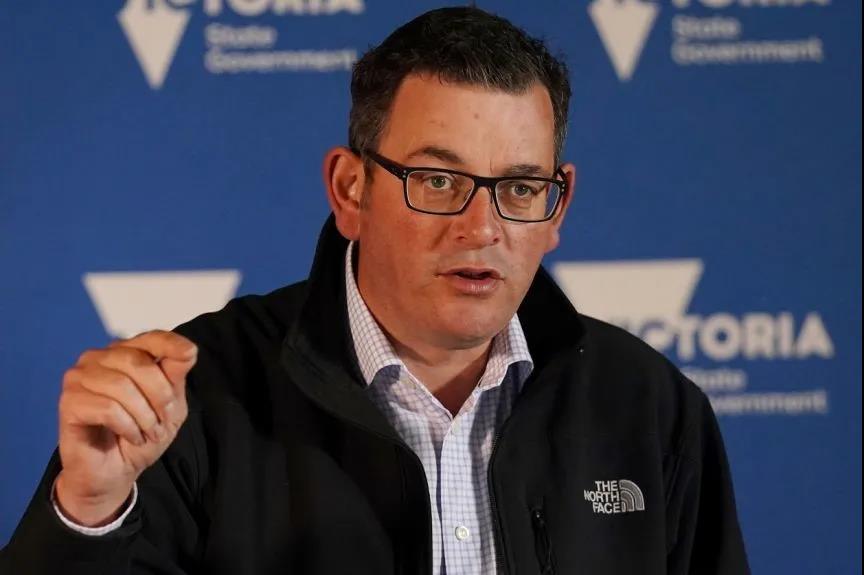Unlocking New Processes: June Recovery for the Catering Industry, Mixed Prospects for the Real Estate Market! Australia, a Hot Investment Destination?
01
Catering Industry Set to Recover! Victoria Begins New Phase of Reopening in June
Victorian Premier Daniel Andrews announced that from June 1st, cafes, restaurants, and bars in Victoria will resume normal operations with indoor dining allowed for up to 20 customers.
The Premier emphasized that only the dining areas of bars that serve food will be reopened, not all public bars. Starting from June 22nd, up to 50 customers will be allowed, and by mid-July, the capacity will increase to 100.
The hospitality industry will adopt new operating rules to reduce the risk of outbreaks. The Premier stated, “Venues that do not comply with the new work instructions will be forced to close.”
These new instructions include:
- All customers must maintain social distancing.
- Tables must be spaced 1.5 meters apart, allowing one person per four square meters indoors.
- Name and contact details need to be recorded for dining at cafes, bars, or restaurants.
- Additional cleaning and disinfection of public spaces, employee health checks, and temperature screenings are required.
- Enforcement of the new regulations will be supervised by the police and health department officials.
Andrews emphasized, “Only if people adhere to the rules, will the measures be gradually eased as planned. If there is a resurgence of the virus, the plan will be reviewed or even canceled.”
In the past 24 hours, Victoria reported six new confirmed cases, with two cases linked to known outbreaks and three cases being returned travelers, according to Health Minister Jenny Mikakos.
She said, “The results so far have been very promising and indicate that we are moving in the right direction.”
02
Property Vacancy Rates Soar in Various Areas
The market downturn caused by the COVID-19 pandemic has sparked panic among property sellers, leading them to significantly reduce prices to make sales. Buyers will have more room for negotiation.
According to the latest data from the real estate sales website Domain, in April this year, 13.1% of Sydney sellers reduced their property prices for sale, nearly double the rate of 6.7% last year.
In Melbourne, the rate was 10.7%, almost three times the rate of 3.7% in the same period last year.
Previously, the Commonwealth Bank of Australia predicted that in the worst-case scenario, Australian house prices would plummet by 32% by 2023.
If this situation does occur, based on CoreLogic data from April, a residential property in the Sydney area would drop from AUD 1,026,000 to less than AUD 700,000.
Domain’s Senior Analyst, Nicola Powell, pointed out that concerns about rising unemployment and economic uncertainty have forced many sellers to reduce prices to address the pressing issues caused by the pandemic.
As more and more property sellers begin planning to sell their homes, the number of properties listed in the coming weeks is expected to increase significantly, signaling a slow recovery of confidence in the housing market.
According to data provided by CoreLogic for the week ending on May 10th, pre-listing transaction activity, measured by the number of Comparative Market Analysis (CMA) reports, jumped by 10.6%.
The CMA indicator is considered an important measure of the number of newly listed homes for sale. Real estate agents use this indicator to gain insights into individual properties and market trends in preparation for home sales.
Eliza Owen, an analyst at CoreLogic, stated that the increase in CMA reports indicates that more properties will be listed in the future. In the past seven days, the number of newly listed homes has increased by 11.85%, and mortgage activity has increased by 2.78% compared to the previous week, which is another sign of market improvement.
Based on yesterday’s auction results across Australia, the property vacancy rate in the Sydney area reached a new high at 76%, with a median price of AUD 1,219,000.
In the Melbourne area, the vacancy rate was 53%, with a median price of AUD 775,000. In the capital city of Canberra, the vacancy rate was 57%, with a median price of AUD 735,000.
Owen stated that as social distancing restrictions are relaxed and on-site property inspections gradually resume, confidence in the real estate market is recovering.
03
Global Investments Focused on Australia? Australia? Investing in Australia? This pandemic has severely impacted Australia’s exports, including energy, resources, education, and tourism.
Australia was fortunate to survive the global economic crisis in 2008 with only one quarter of recession. However, this time, Australia’s economy is definitely experiencing a growth interruption due to the pandemic, as two consecutive quarters of declining numbers are considered an economic recession. Nevertheless, the International Monetary Fund (IMF) has made positive forecasts for Australia. If the global COVID-19 situation reaches its peak in the next three months and the Australian government gradually relaxes the “social distancing” policies in the second half of the year, the Australian economy may experience a V-shaped rebound next year, with a growth rate of 6.1%.
The most exciting signal is the record-breaking sale of AUD 19 billion in Australian government bonds on Wednesday, May 13th. Analysts commented, “Given the current unfavorable global investment environment, high-quality and highly liquid government bonds have become the preferred target for investment institutions.” Prime Minister Scott Morrison also proudly stated, “Now, global rating agencies recognize that Australia has made significant achievements in combating the pandemic and driving economic recovery. Our sovereign bonds are repeatedly sold out.”
A total of AUD 300 billion of government bonds were issued to fill the gap caused by the pandemic support policies. Now, there is no need to worry about the remaining AUD 214 billion.
Although Australia’s unemployment rate is 6.2%, which is lower than the previously predicted 8.2%, the number of global investments in Australia continues to increase. In 2018-2019, the total value of foreign investment applications reviewed by the Foreign Investment Review Board (FIRB) increased by AUD 67.9 billion, reaching AUD 231 billion. This includes AUD 76 billion invested in the service industry and AUD 73 billion in commercial real estate. Notably, global investments in Australian real estate have increased significantly: U.S. investments surged more than three times from AUD 19.5 billion in 2018 to AUD 195 billion, Canadian investments increased from AUD 2.1 billion to AUD 13.3 billion, and Hong Kong investments rose from AUD 2.8 billion to AUD 9.3 billion. Despite the high overseas stamp duty, these investors continue to invest in Australian real estate. Could it be that they see the safety of Australia?
Regardless, it is highly probable that Australia’s economy will experience a strong recovery unless unexpected events occur.
Read More >>





